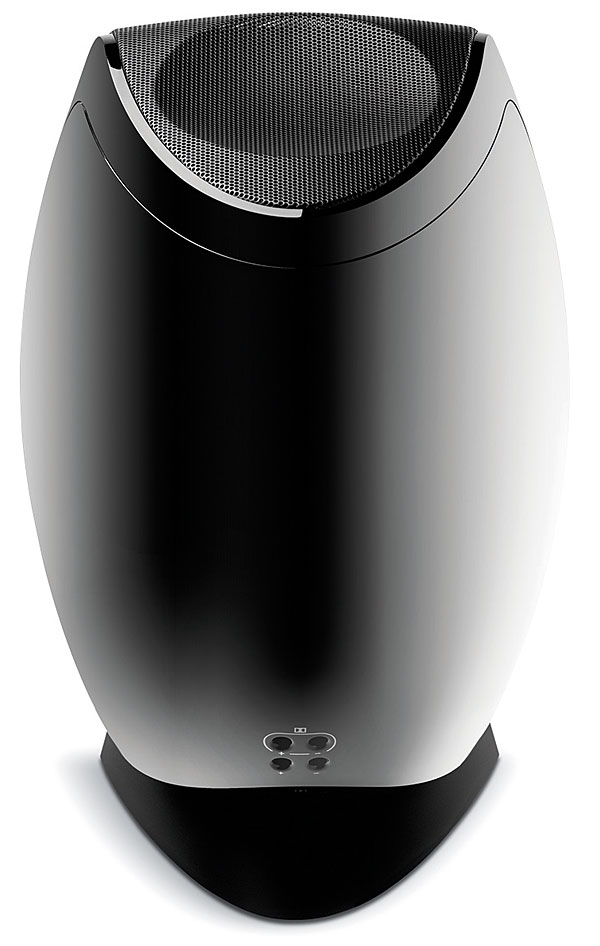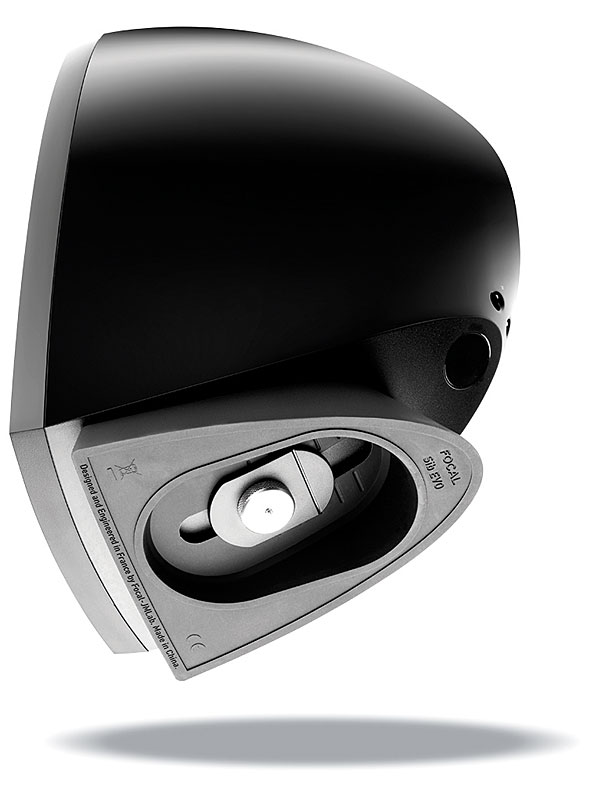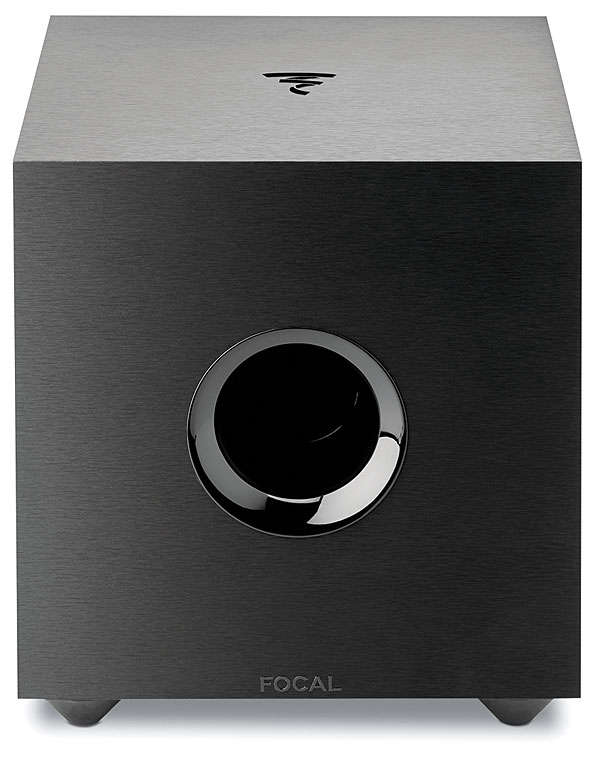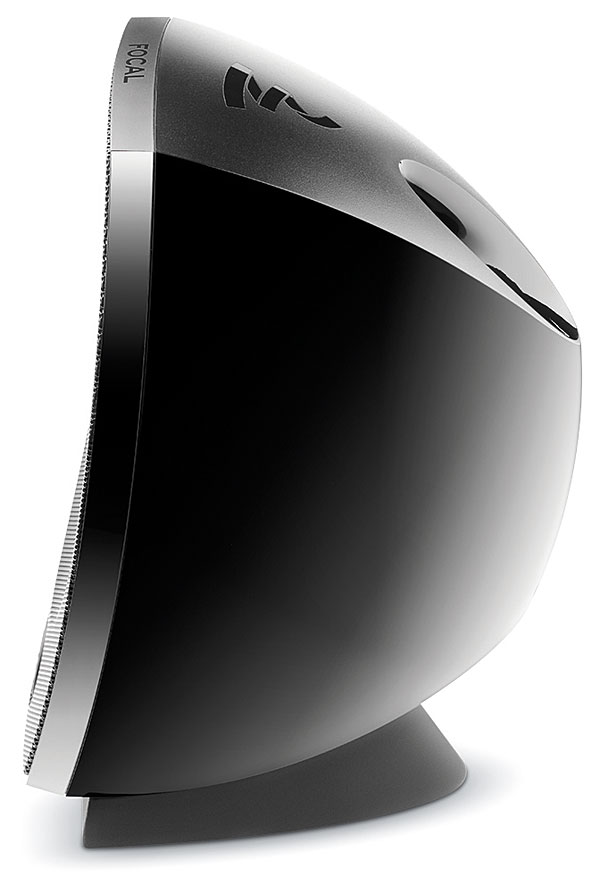Focal Sib Evo Dolby Atmos 5.1.2 Speaker System Review Page 2

On clean pop such as the Police’s “Walking on the Moon,” I found that the Focal system would play surprisingly loudly: well past “party level,” and indeed a good stretch louder with reasonably intact sonics. At severe levels, strong midrange sounds became audibly coarse, and big bass from the sub a bit flabby—neither unexpected from so compact a system. But even in a larger room such as mine, with adequate amplification, the Focals should yield satisfying loudness for all but the more severe disco- or shredder-heads.
Moving on to multichannel, I began with music, commencing with a favorite reference, the Telarc SACD of Stravinsky’s Rite of Spring. Front soundstage was excellently solid and deep, with rich, convincing hall sound from the supporting channels. The more densely orchestrated sections remained well detailed and timbrally focused, even while the satellite quintet had no difficulty delivering concerthall-like levels with full fidelity—maybe not third-row levels but 15th or so, certainly.
When I switched to film sound, my first order of business was, of course, a check of the Focal system’s Atmos-phere with this 5.1.2 setup, so I began with one of Dolby’s own Atmos demo discs on Blu-ray, an invaluable reference tool. Clips like “Amaze” and “Conductor” quickly displayed effective delivery of the height dimension, sending naturalistic forest and bird sounds fluttering above and across the front stage. Above, but not as far above as I’m accustomed to hearing from my everyday setup. The Atmos satellites’ height drivers are inset fairly deeply into their egg-shaped cabinets’ tops but are tilted forward substantially to aim higher-frequency sounds well forward, intended to be reflected from the ceiling somewhere about midway between the screen and the listener. Out of the box, the sats’ adjustable stands are tilted well back—to Dolby’s specification, according to Focal—which was just about right to direct the main drivers’ sound to the seated listener’s ear height in my setup. Nonetheless, experimentally, I adjusted the stands to bring the speakers a few degrees more upright, thus aiming the upward drivers a bit more forward out into the room. I was rewarded with, I thought, a discernibly more elevated, fully “height”-enhanced bubble of ambience.

Focal also shipped me an extra pair of the Sib Evo Dolby Atmos satellites to try a full 5.1.4 layout; these I put on stands, raising them just above ear level, more or less directly below the high shelves where my surround speakers otherwise are placed. (As noted above, an extra pair of Atmos satellites is available for $599—but if you go that route, you’ll also end up with an extra pair of non-Atmos sats, a fact about which I’ll have more to say below.) This 5.1.4 system certainly delivered an advantage in overall height and “vertical volume” of surround ambience and effects. But in my setup, the benefit was less pronounced than one might expect. It turns out that the plain, two-way surrounds (the ones packed in the 5.1.2 system)—placed on high shelves flanking the seating position and aimed slightly rearward, as I had deployed them—split the difference, “faking” a certain sense of rear height even in the 5.1.2 configuration. In a room laid out for stand-mount surrounds, budget permitting, I would certainly go for the rear Atmos option. But where higher-up wall- or shelf-mount surrounds are called for, I’m not sure the payoff is there.
Reverting to the as-supplied 5.1.2 layout, I cued up Billy Lynn’s Long Halftime Walk to experience full movie soundtrack reproduction. (I found the film’s deliberately amateurish, stagey, and video-realism 4K/60 look a fascinating artistic choice by director Ang Lee, but I’m not here to discuss that.) The Focal system proved every bit as impressive here as it had on music. Dialogue was crisp and intelligible, and both the front stage and surround soundfield held tight through loud, fast-moving action sequences and intimate one-on-ones. I encountered plenty of discrete effects that displayed the Atmos 5.1.2 virtues, but as I have said before, I found the greatest value in the clearly enlarged bubble of ambience. This was best demonstrated not by zinging bullets but by sequences like the loud, full-stadium crowd scenes, which conveyed a palpably more convincing sense of you-are-there-ness (and thus the madness-of-crowds power that leads ultimately to senseless wars, as I suspect Lee’s message to be). And overall, the Focal suite showed no strain in throwing out a big, cinematic soundfield at impressive levels.

Even better, the little Cub sub (I still love saying it!) proved very intelligently designed. A sub this small can’t be expected to deliver room-shaking 25 Hz, yet the diminutive Cub managed solid, reasonably tight and punchy bass to what sounded like 35 Hz and below, producing acceptably cinematic foundation and impact. And unlike the large majority of 8-inch subs I’ve encountered, the Cub proved very nearly able to keep up with the output capabilities of its mates. Only toward the highest levels to which the satellites could be responsibly pushed did the compact sub become a bit thuddy and exhibit some port-noise rudeness on big/deep bass effects.
Bottom Line
Focal’s Sib Evo Dolby Atmos system, whether in 5.1.2- or 5.1.4-channel array, is simply one of the best one-box home theater loudspeaker solutions I’ve heard. I have no serious issues whatsoever with its sound quality or quantity, design, or implementation. I do, however, have to digress a bit regarding its packaging. By not offering a full four-Atmos-satellite 5.1.4 package, Focal is effectively forcing the buyer committed to all-around Atmos to spring for an extra and possibly unneeded pair of speakers: the non-Atmos sat pair packed in the master system.

Sure, you could deploy them as back-surrounds in a 7.1.4 layout (assuming you have the processing and amplification channels to do so). Or you could even assign them to remote-speaker duty in a casual-listening second room. Just the same, being forced to buy them is not cool. That said, I can see the situation from Focal’s viewpoint, too. Most buyers will be perfectly fine with 5.1.2, and (per the bean counters) it probably wasn’t practicable for Focal to offer an additional one-box configuration, or make each of the individual elements available separately at pricing competitive with the prepackaged system. So the company’s choices are certainly defensible.In the grand scheme, this is a modest gripe. Otherwise, the Sib Evo Dolby Atmos system is a winner, soup to nuts: elegantly designed, acoustically excellent, and a conspicuous value. Anyone on the hunt for a smallerthan-big but bigger-than-tiny surround system is well advised to hear it.
- Log in or register to post comments























































